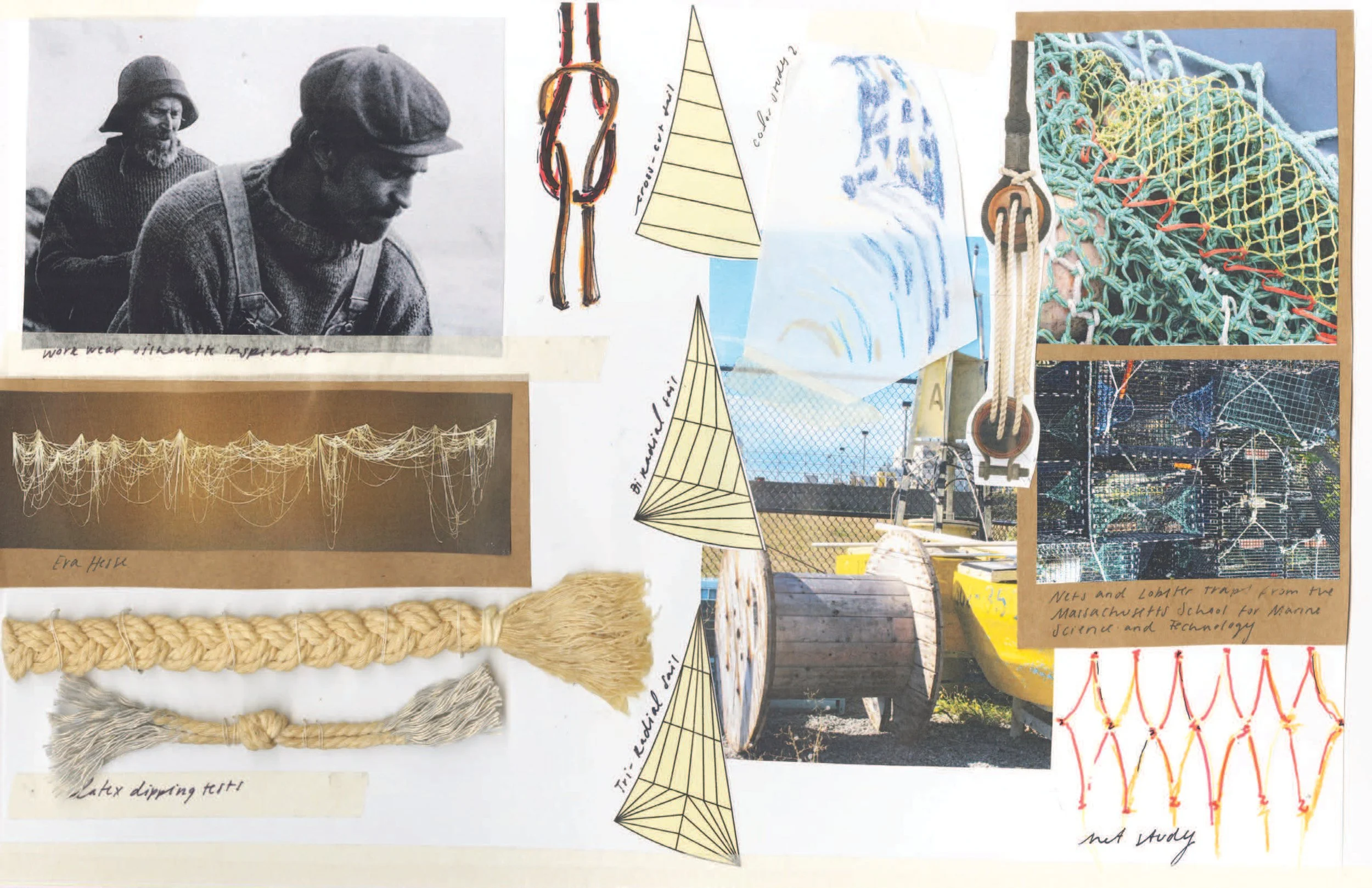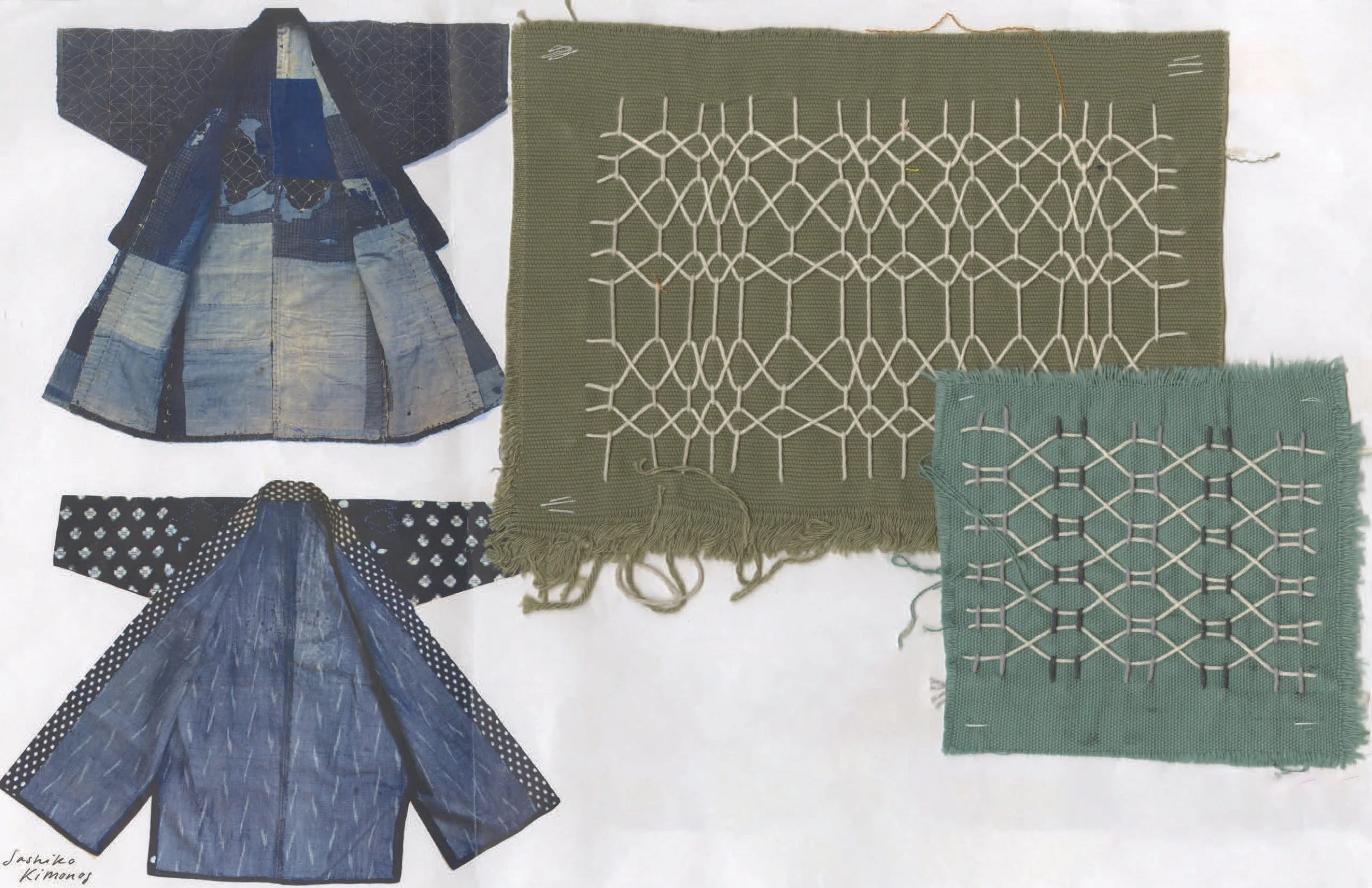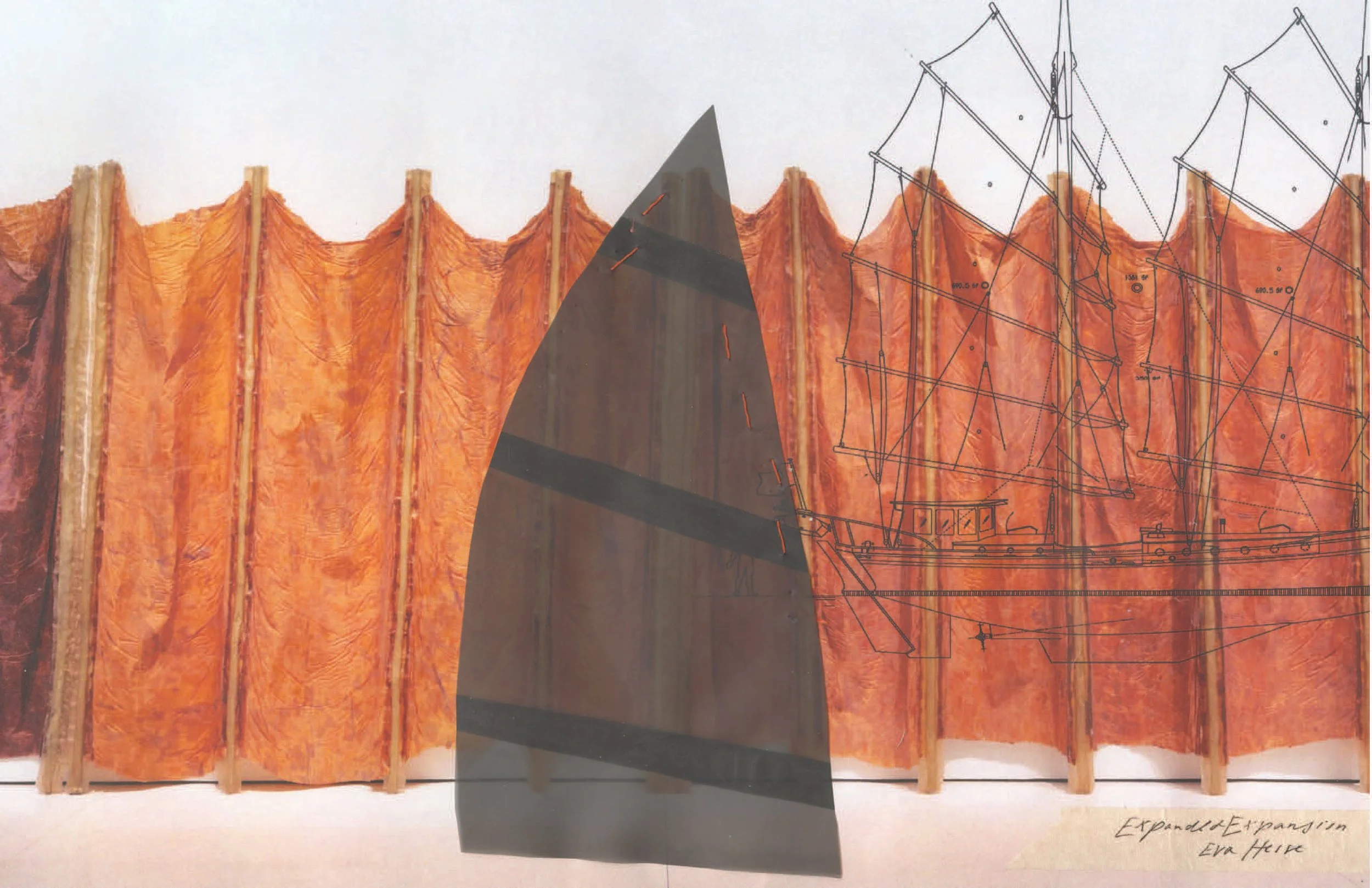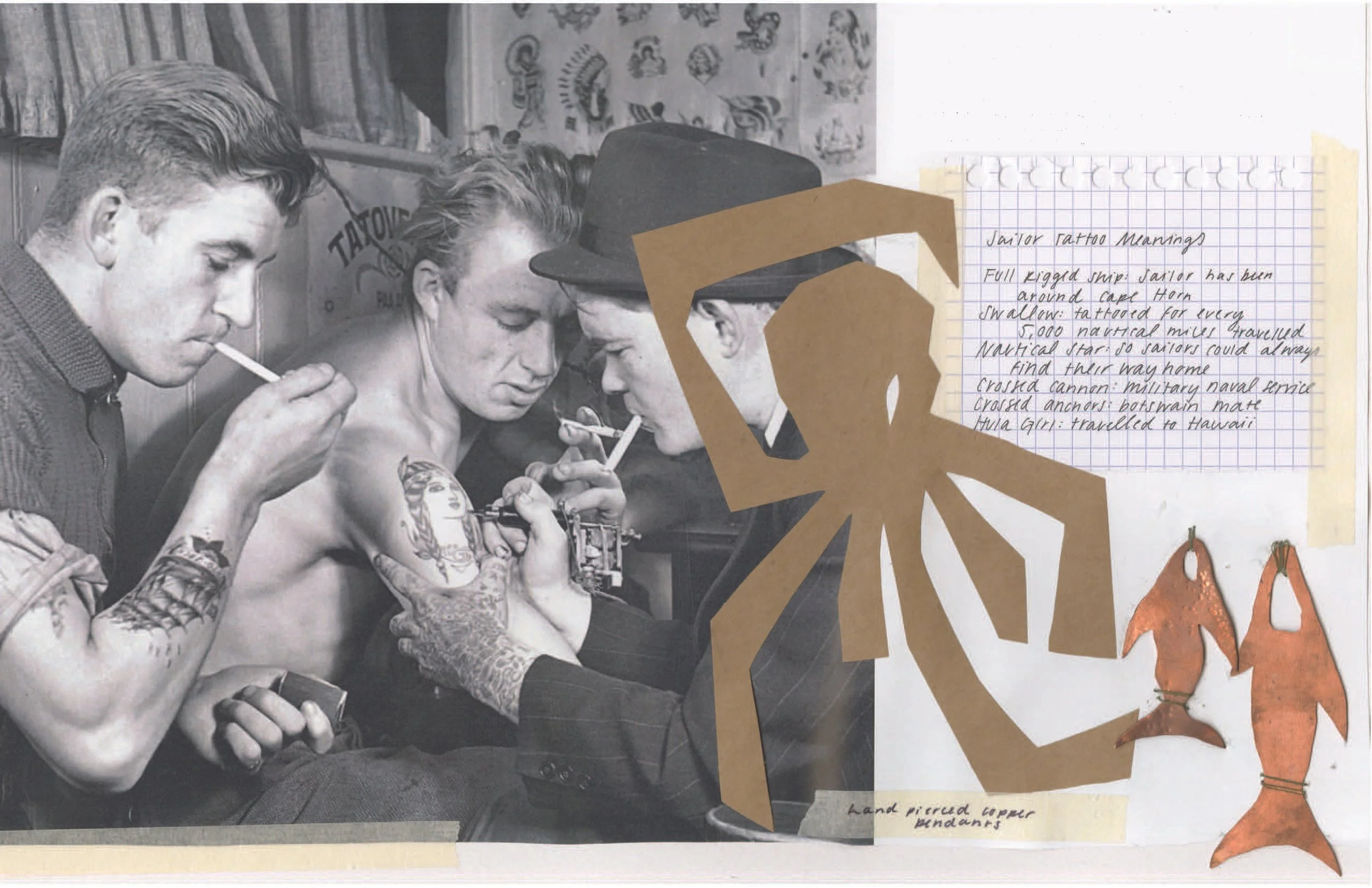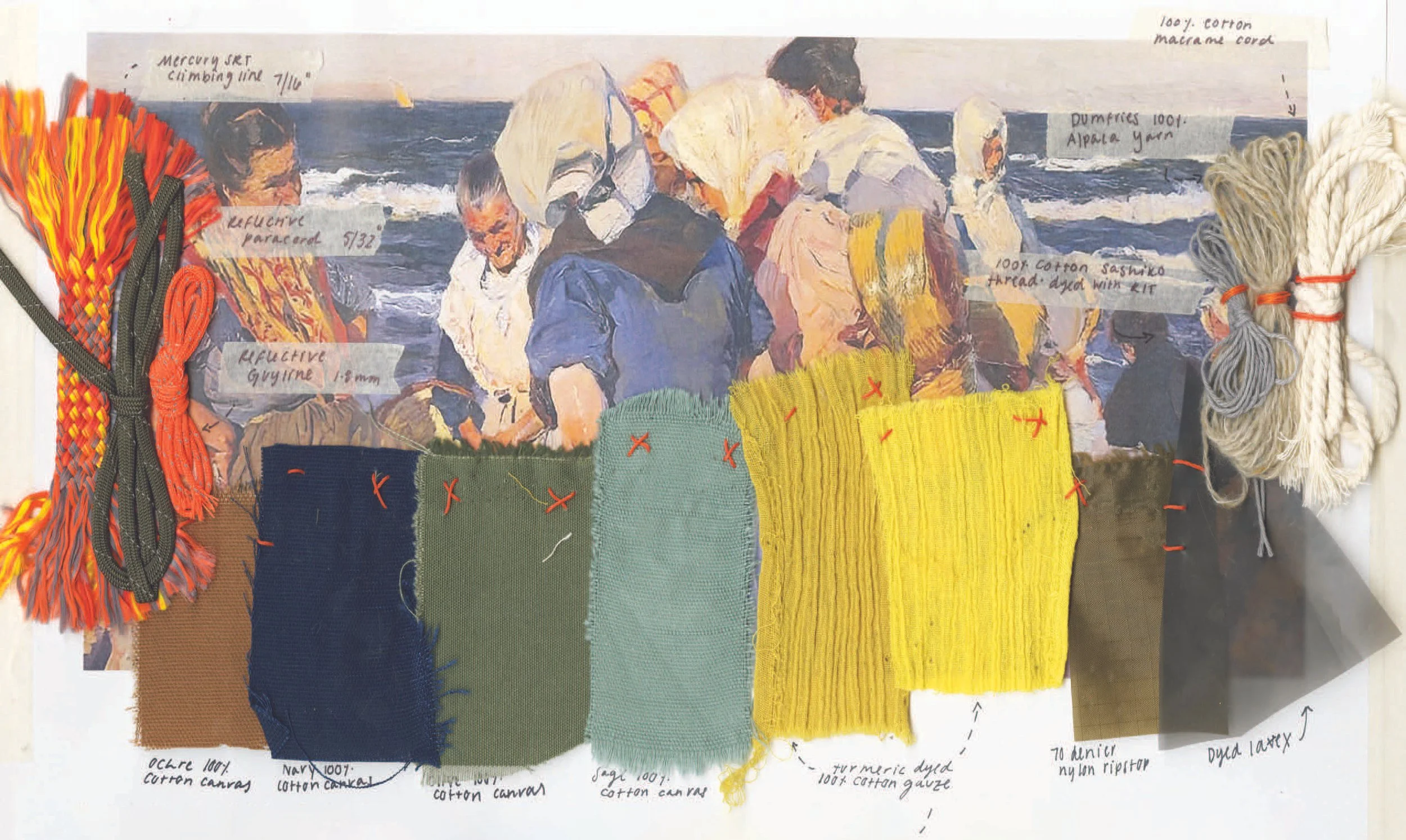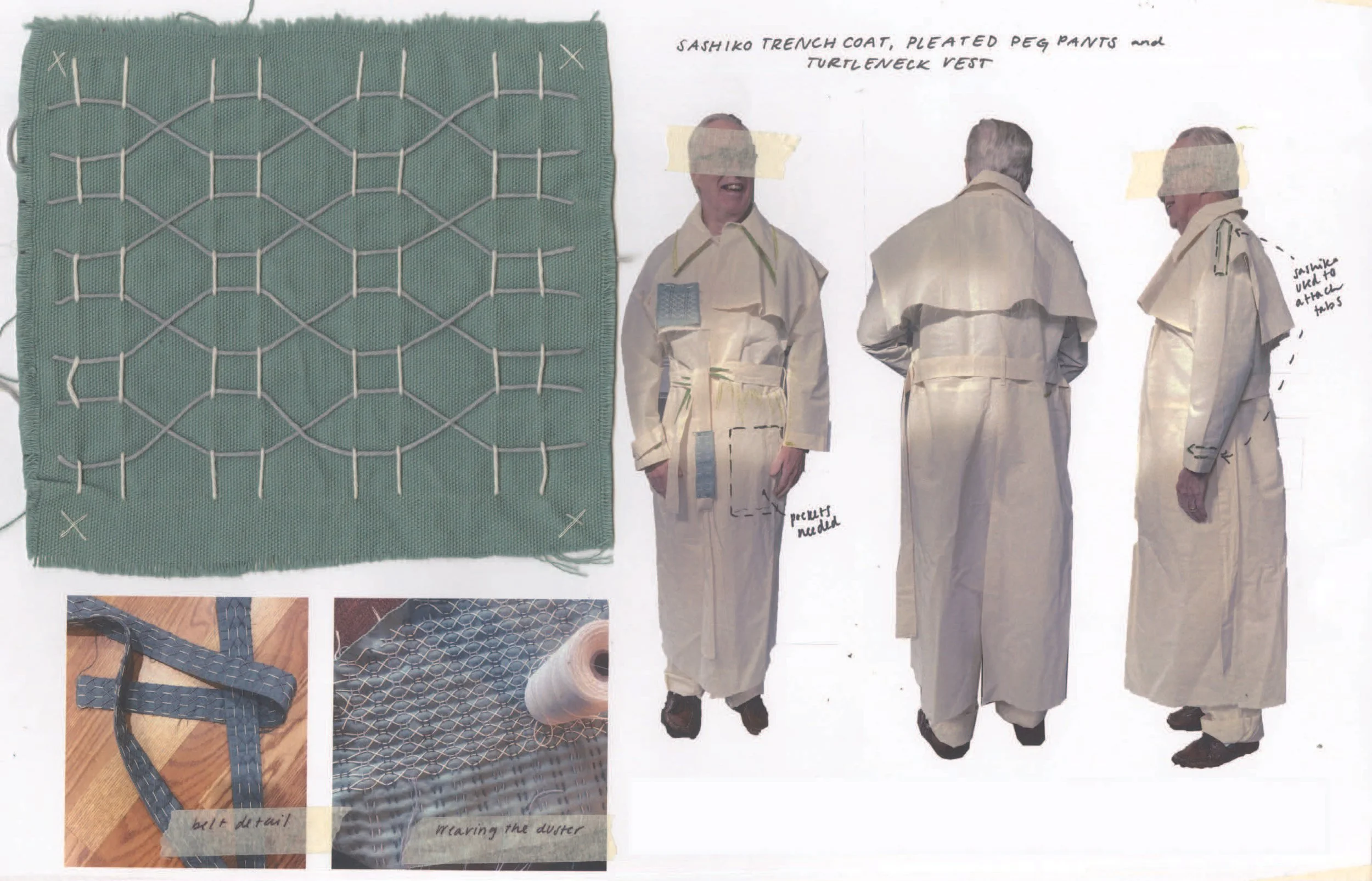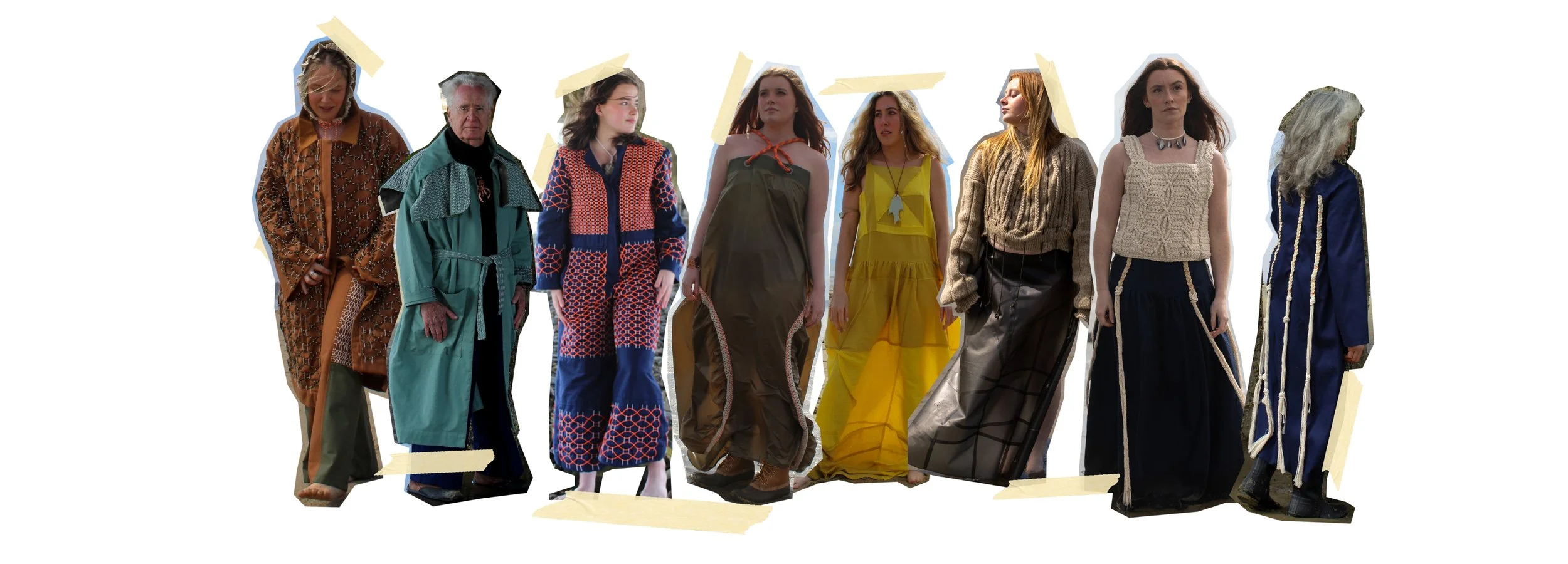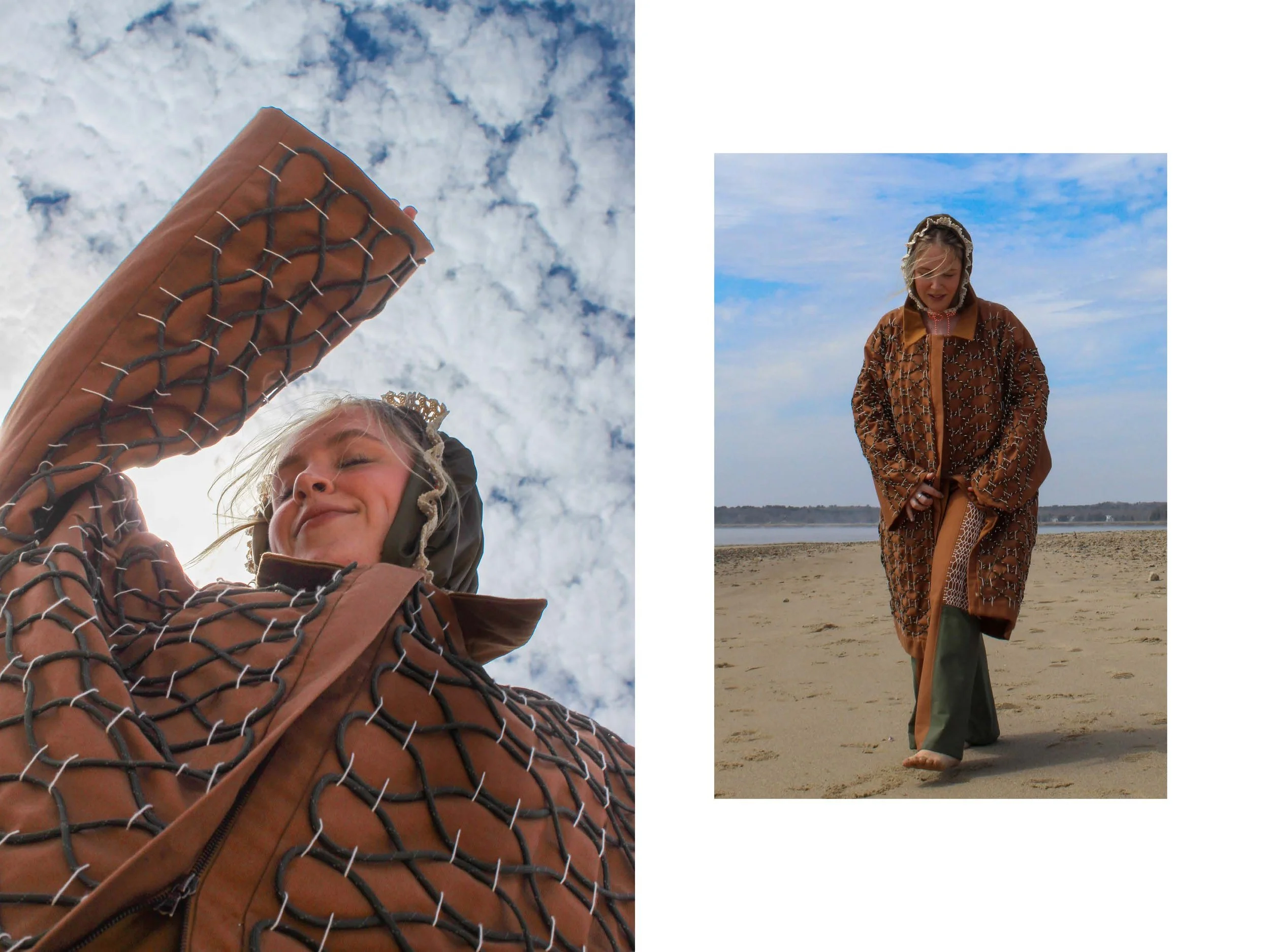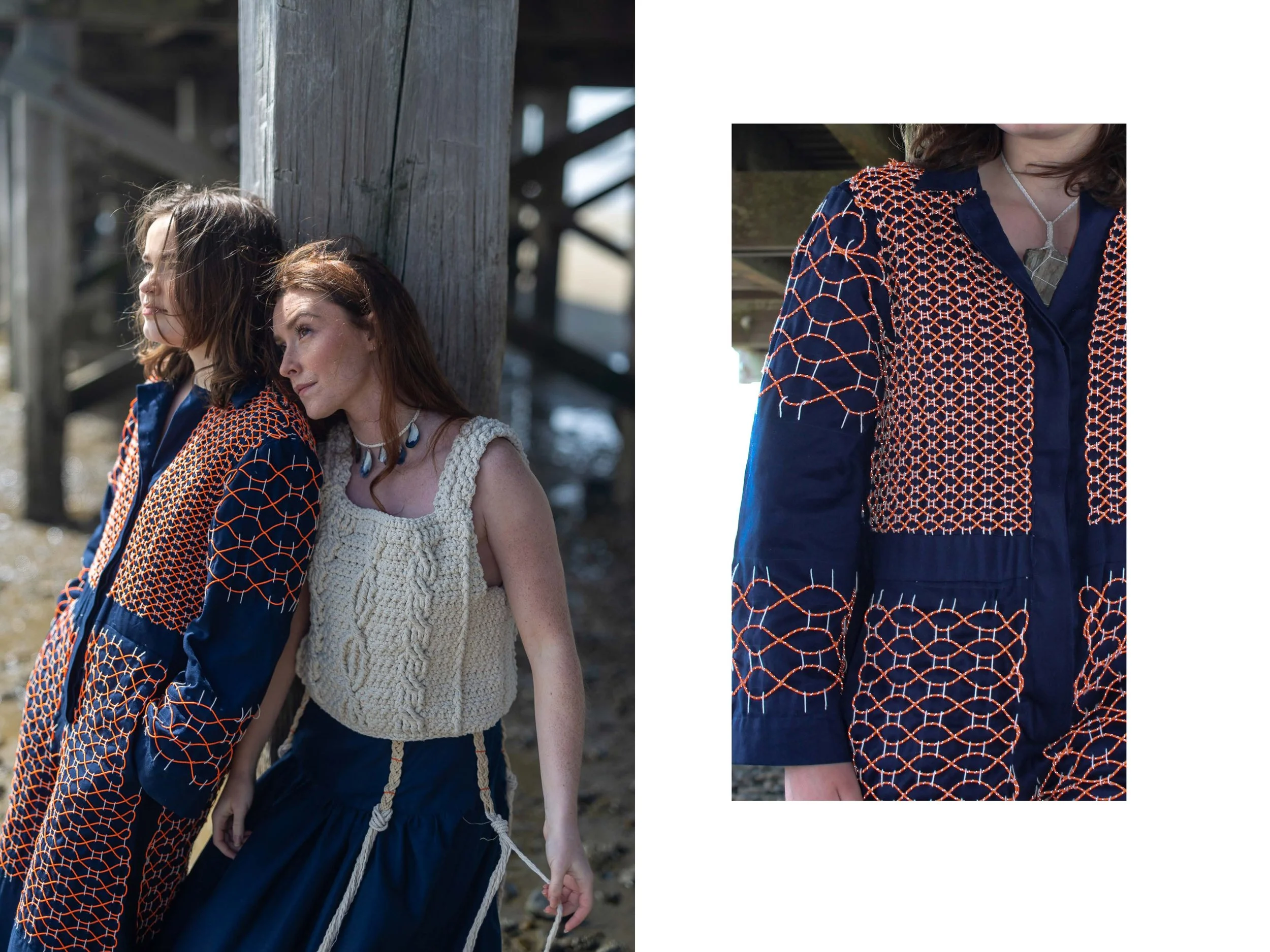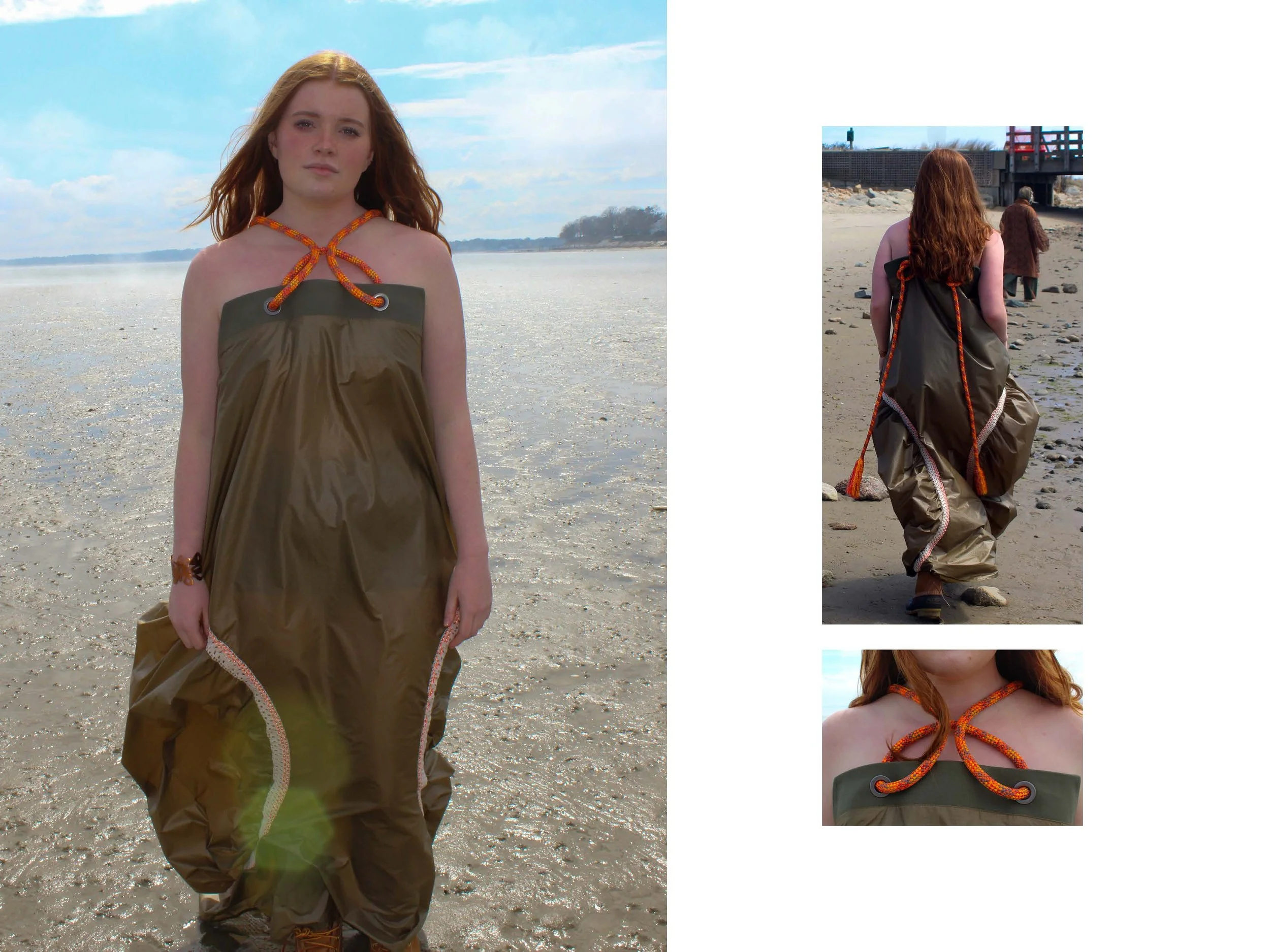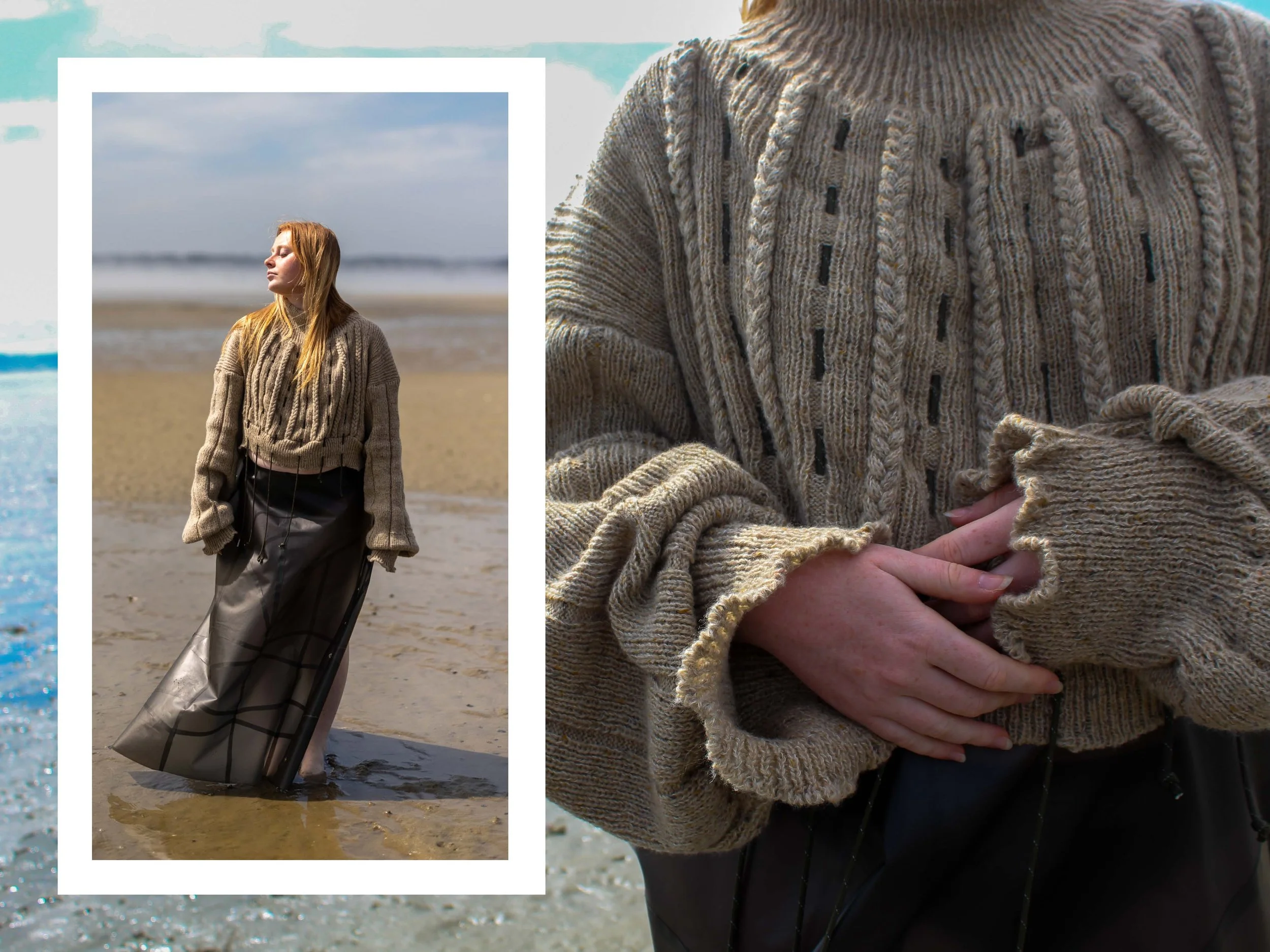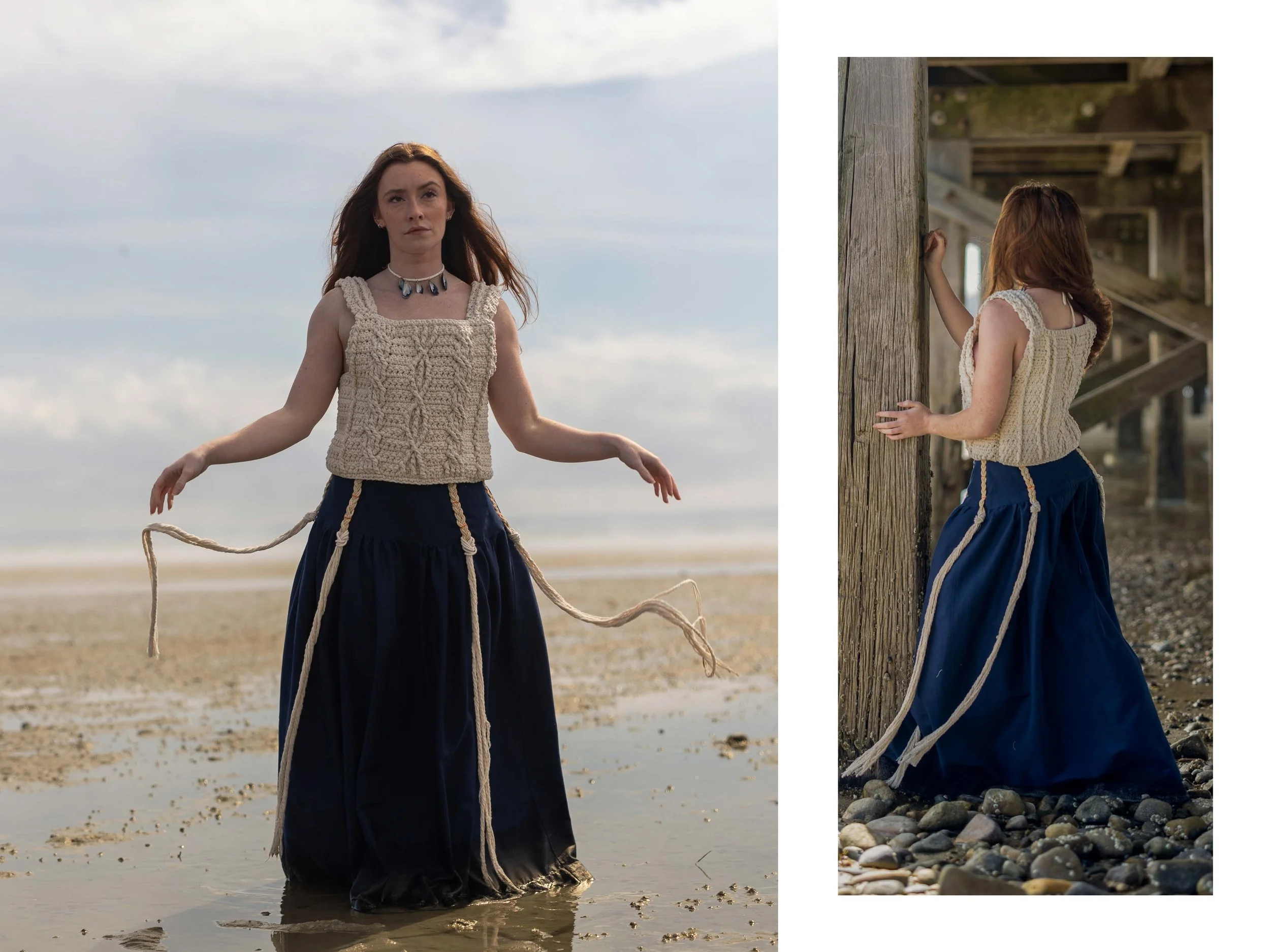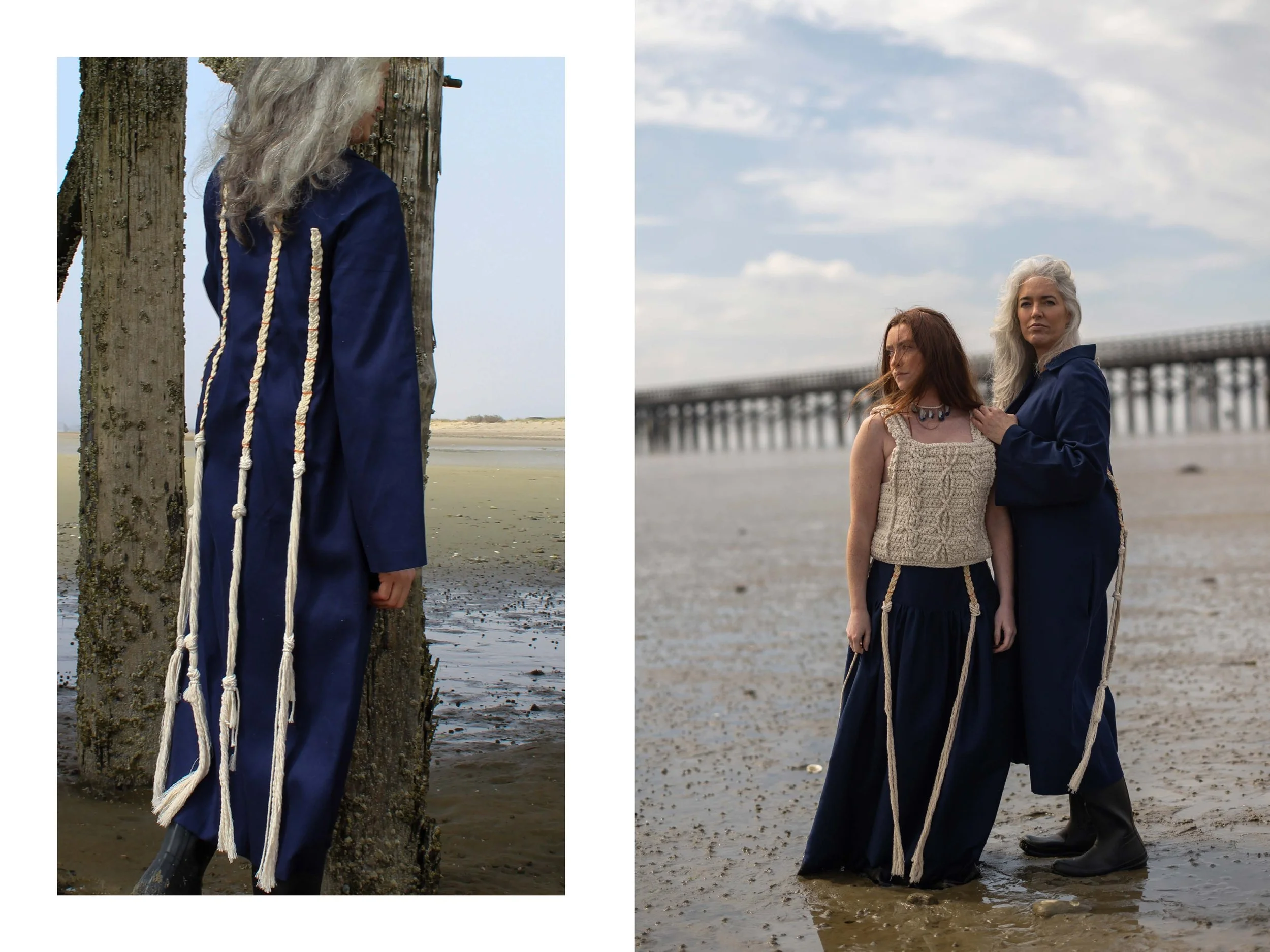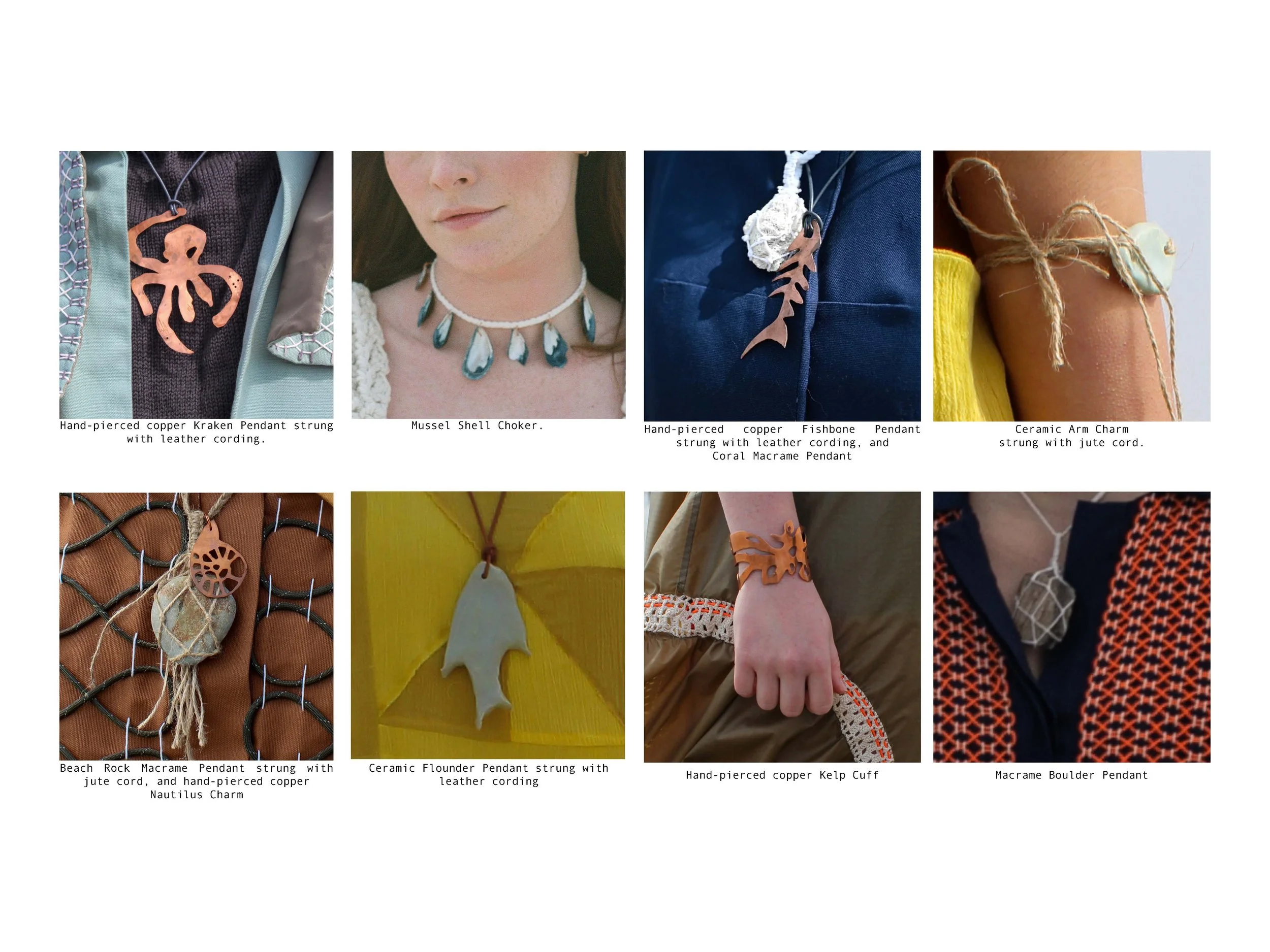JEtsam
Through the visual language of fishing culture, I aim to capture the essence of the community in a women’s and menswear collection. Growing up on the south shore of Massachusetts, I fell in love with the fishing community, their stories, and the rich material library that encapsulates the nautical world. Not only the fishermen but their wives, as they would uphold their communities while their husbands were on long fishing voyages, serve as the inspiration for my garments. The gentle roughness of these women painted along coastlines for centuries mirror the women in my life and history, and this collection pays homage to their strength, resilience, and grace.
I honor my own community in this body of work by using materials donated from my family members in my materiality, as well as using my family as visual inspiration, photographing them in my garments. Jetsam is materials that have been thrown overboard from a ship and washed ashore, and throughout my research, I collect the imagery, rituals, materials, and craft jettisoned from the bow of the ship and use this information as the bedrock of my thesis collection.
Kuguri-Sashiko or Stitch-and-Weave is a Japanese embroidery technique where a grid is stitched, and embroidery thread, is woven through the grid posts. Traditionally used to reinforce fabric, Japanese fishermen's jackets were mended with sashiko. In these weave patterns, I recognized the sinusoidal waves of tide charts and boatmaking diagrams. In this collection, I utilize sashiko not for its mending properties, but for its decorative beauty, and strategically avoid placing my stitches in areas where wear and tear occur, such as elbow and knee patches. In this way, the stitches serve as a visible armour.
Fishermen's folktales, their daily lives onnboard, and their routines and rituals came up time and time again in my research. Soon I understood that in addition to the strict codes of conduct and hierarchies, there also existed a visual language of uniform and body modifications. Tattooing of sailors not only served as a bonding ritual between men on aboard a long voyage, but each tattoo is a visual marker of trips made, rank, status, and location travelled. Gleaning this visual language, I infuse their insider knowledge into the folds of this collection, translating their language into jewelry.
International maritime signal flags are used to communicate with ships. A sesries of flags can spell out a message, with each flag representing a letter. Additionally, individual flags have meanings associated with the International Code of Symbols. For example, the V flag's ICS meaning is "I require assistance." Taking these flags, I spelled out my own name. Then, I overlapped and manipulated the flags to create a symbol for my own name, EVA. With that symbol, I created the pattern for the top of this sail dress. The skirt of the dress is patterned entirely off of the seam pattern of a tri-radial sail.
I drew parallels from Eva Hesse' Expanded Expansion and the cross-cut sail construction. Hesse's use of unconventional artmaking materials such as latex and its use in shipbuilding as a waterproofing sealant led me to experiment with creating garments out of latex. I used latex sheets to reinterpret sail designs, and also experimented with seaming together fabric with cosmetic-grade liquid latex to create a strong, water resistant bond.
fabric board
In this collection, fabric selection is integral to the ethos of the garments. From cotton canvas and nylon ripstop, to copper and rope, every piece of material in this collection can be found aboard a fishing vessel. Wool was used to insulate bedding and in warm outerwear, and latex was used to waterproof clothing and ship parts. I also honor my community by utilizing materials given to me, collecting yarn from Littles Creek Farm in Marshfield, Massachusetts, to utilizing deadstock rope from my uncle's company, Samson Rope. Their resourcefulness and willingness to share their craft with me embodies the nature of these centuries old fishing communities that have served as my inspiration.
Wanting to include my community that inspired this collection in a more literal sense, I designed a look to be worn by my grandfather. Taking inspiration from traditional trench coats, I utilized the large waterproofing duster as a canvas for my sashiko stitching. In a decorative way, sashiko can be seen on the belt and duster, however I also utilized sashiko for its traditional mending purpose, connecting the sleeve and shoulder tabs onto the garment with these stitches. This garment also features several different scales and stitch patterns.




